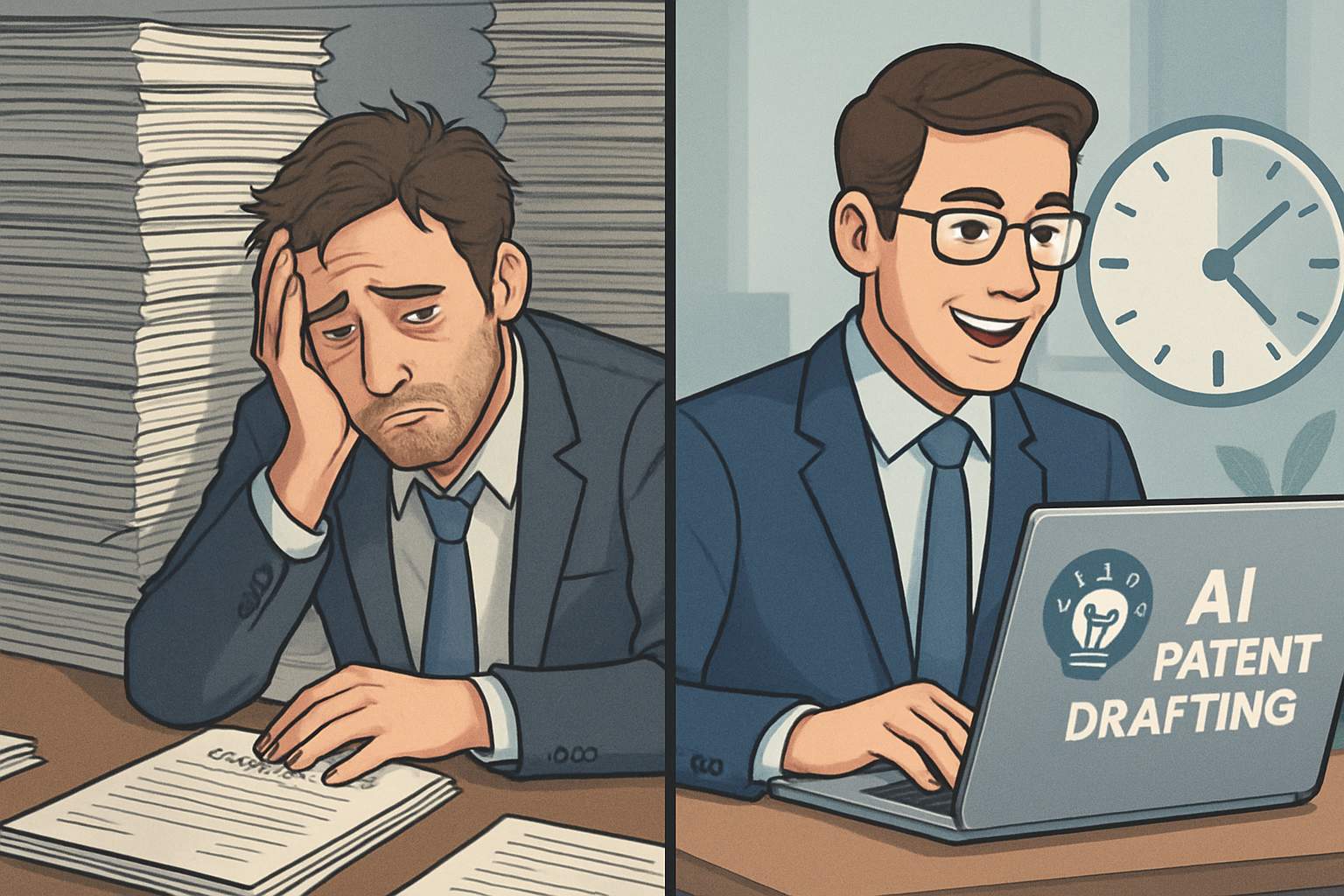
AI CERTS
5 hours ago
IP AI slashes patent drafting time, reshapes practice
Market Growth Signals
Automated patent drafting tools moved from pilot to product within two years. MarketGrowthReports values the niche at USD 19.18 million for 2024. Moreover, analysts project 12.8% compound annual growth through 2033. Vendors like PatentProtector.ai and PowerPatent highlight 40–60% drafting time cuts. One IP AI platform even claims "provisional drafts in minutes."

Adoption gains context from user surveys:
- Average first-draft hours dropped from 25 to 12.
- Throughput rose without equivalent headcount increases.
- Search steps run in seconds instead of hours.
Nevertheless, many firms still pilot the technology rather than mandate it. These data points reveal rapid commercialization. Therefore, market watchers expect accelerated competition next year.
The growth surge sets the scene. Subsequently, regulators have started sharpening their focus.
Regulatory Guardrails Tighten
The USPTO issued inventorship guidance in early 2024. Furthermore, the office added AI similarity search inside its PE2E platform. Director Kathi Vidal stressed balanced protection for human ingenuity. Meanwhile, European counterparts study similar measures.
Current rules permit IP AI assistance yet require human review. Additionally, examiners must record any AI search use in the file history. Academics applaud transparency, but they urge stricter disclosure standards. Lisa Larrimore Ouellette of Stanford warned that AI can amplify errors on both sides of patentability decisions.
Courts also confront inventorship in DABUS-style cases. In contrast, no jurisdiction currently recognizes a purely machine inventor. Patent Law therefore still centers on natural persons.
These guardrails shape acceptable workflows. Consequently, practitioners must align adoption with evolving guidance before deploying at scale.
Policy clarity guides workflows; however, users mostly pursue IP AI for efficiency benefits. The next section quantifies those gains.
Workflow Benefits Realized
Corporate IP teams cite several tangible wins. Firstly, drafting speed accelerates filing priority, crucial for first-to-file regimes. Secondly, AI search uncovers prior art that legacy tools missed. Moreover, in-house counsel report lower external counsel bills because attorneys review rather than craft entire drafts.
PowerPatent demonstrated live CES 2025 sessions. Attendees watched an application skeleton emerge in under ten minutes. Importantly, expert attorneys then refined claims. This human-machine loop preserved quality while sustaining pace.
IP AI also supports Innovation pipelines. University tech-transfer offices can prepare provisional filings early, preserving future rights while researchers iterate. Consequently, smaller budgets now access strategic protection that once felt out of reach.
Efficiency gains spark enthusiasm. Nevertheless, risks still shadow the technology, as detailed next.
Persistent Legal Risks
Generative models sometimes hallucinate technical details. Therefore, enablement can fail, exposing patents to invalidation. Additionally, confidential data entered into external models risk unintended disclosure. Vendors offer on-prem options, yet many users ignore the difference.
Inventorship remains unsettled. Heavy reliance on IP AI may blur who actually conceived the invention. Patent Law demands precise attribution; missteps invite litigation or rejection. Moreover, liability questions surface when faulty drafts slip through review. Vendors disavow legal advice, placing ultimate responsibility on counsel.
International divergence compounds complexity. Each office holds unique disclosure thresholds. Consequently, global applicants must tailor AI outputs per jurisdiction.
These hazards require proactive mitigation. Subsequently, organizations craft structured adoption programs.
Strategic Adoption Roadmap
Experienced teams embed guardrails at every stage. Firstly, they restrict model access to secured, private instances. Secondly, prompt templates force inclusion of invention specifics only after confidentiality checks. Moreover, every AI draft undergoes dual human review for legal scope and technical accuracy.
Professionals can enhance oversight skills with the AI Legal Strategist™ certification. The program trains attorneys to audit IP AI outputs and document inventorship compliance.
Suggested implementation milestones include:
- Run small proofs of concept on low-stakes provisional filings.
- Collect metrics on time saved and office action frequency.
- Update engagement letters to disclose AI usage to clients.
- Create incident procedures for hallucination or data leakage events.
Structured rollouts balance speed with accountability. Therefore, teams avoid surprises while capturing measurable gains.
A disciplined roadmap readies practitioners for tomorrow. Subsequently, they look ahead to broader ecosystem shifts.
Future Outlook Snapshot
Analysts expect richer multimodal models that generate claims, drawings, and code snippets together. Additionally, regulatory sandboxes may emerge to test novel disclosure formats. Meanwhile, market consolidation seems likely as larger legal-tech players acquire niche start-ups.
IP AI will likely integrate deeply with prosecution analytics, predicting examiner preferences. Consequently, application strategy could become data-driven rather than intuition-driven. Innovation cycles will tighten further as drafting no longer bottlenecks iteration.
However, robust Patent Law fundamentals will persist. Courts will still demand clear enablement and valid inventorship. Therefore, success hinges on harmonizing algorithmic speed with classical legal rigor.
The coming decade promises transformation. Nevertheless, prudent practitioners already schedule continuous training and tool audits.
These forward trends set the stage for decisive action. Subsequently, a concise conclusion follows.
Conclusion And Next Steps
IP AI now trims patent drafting, search, and filing timelines by unprecedented margins. Market adoption grows swiftly, while regulators craft guardrails to protect quality. Workflow experiments confirm significant savings, yet disclosure, inventorship, and liability remain live concerns. Moreover, strategic roadmaps and certifications equip professionals to navigate emerging complexities.
Consequently, readers should pilot secure deployments, monitor policy updates, and refine human review protocols. For deeper mastery, pursue the linked credential and stay ahead in the evolving IP landscape.
Accelerate your team today; embrace AI responsibly and defend Innovation tomorrow.



